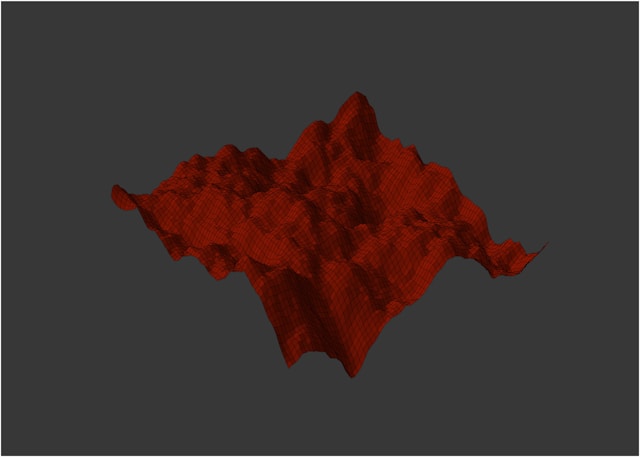Modeling MTG Combo Wins With Monte Carlo Simulations

Monte Carlo simulations are a powerful method for generating forecasts—predicted scenarios with associated probabilities. These simulations are widely used across various fields, from estimating constants like π and e to predicting weather patterns and modeling fission energy production. In fact, the Monte Carlo method was originally developed by John von Neumann and his colleagues at Los Alamos during the Manhattan Project to simulate atomic collisions in fission reactions.
A Monte Carlo simulation works by assigning multiple values to a single variable, generating multiple results, and then averaging them to estimate likely outcomes. For example, if we wanted to analyze land draw rates for different deck compositions, we could simulate thousands of games and weight the results to determine the most probable outcome. Similarly, we could estimate the likelihood of drawing into a combo with n number of key cards.
This approach is particularly useful in Magic: The Gathering (MTG) because the game is a stochastic process—the outcome is influenced by randomness. Even with perfect knowledge of all game states, which players rarely have, the order of cards, in-game decisions, and random effects like coin flips create a unique game trajectory every time.
Experiment Setup#
To explore this concept, I built a Monte Carlo simulation to model a two-card win condition (e.g., Thassa’s Oracle + Demonic Consultation) in a 99-card deck with 37 lands.
The simulation revealed that, on average, you need to draw 41 additional cards after your opening hand to assemble a two-card combo. That’s nearly half the deck! This suggests a key heuristic: for each card required in a combo, a player needs to draw approximately 20 additional cards. This underscores why draw engines are crucial in Magic—without sufficient card draw, combo-based strategies become unreliable.
Notably, 25 cards of draw is a reasonable expectation within 10 turns for a well-constructed Commander deck in 2024.
Simulation Results#
📊 Run 1:
Attempts: 10,000,000
Average Draws to Win: 41.18
Opening Hand Wins: 42,858
Average Opening Hand Win Rate: 0.4286%
📊 Run 2:
Attempts: 10,000,000
Average Draws to Win: 41.17
Opening Hand Wins: 43,136
Average Opening Hand Win Rate: 0.4314%
📊 Run 3:
Attempts: 10,000,000
Average Draws to Win: 41.18
Opening Hand Wins: 43,163
Average Opening Hand Win Rate: 0.4316%
Increasing the sample size from 1,000 to 10,000,000 produced no significant difference in the numbers, reinforcing the reliability of the simulation.
Impact of Multiple Combo Lines#
Adding a second two-card combo to the deck decreased the average number of draws needed to assemble a win condition. With two separate combo lines, the required draws dropped from 41 to approximately 35—an improvement of about six cards.
📊 Results @ 1,000 scenarios:
Attempts: 1,000
Average Draws to Win: 34.91
Opening Hand Wins: 23
Average Opening Hand Win Rate: 2.3%
📊 Results @ 1,000,000 scenarios:
Attempts: 1,000,000
Average Draws to Win: 35.15
Opening Hand Wins: 16,102
Average Opening Hand Win Rate: 1.61%
This indicates that adding an additional combo line is roughly equivalent to adding six additional draw spells in terms of improving combo consistency.
Opening Hand Wins#
An opening hand win occurs when both combo pieces are in the initial seven-card hand, without considering mulligans. This metric does not account for whether the player has the mana to play the combo, which would significantly reduce the likelihood of a true turn-one win. Instead, this measure provides insight into the raw probability of drawing both combo pieces at any point.
That means that…
- With a single two-card combo, the odds of drawing both pieces in the opening hand are approximately 0.43% (4 hands in every 1,000)
- With two separate two-card combos (four total combo pieces), the odds increase slightly to 1.7%.
The Role of Mulligans#
Mulligans were deliberately excluded from this analysis to isolate the raw probability of drawing into a win condition over the course of a game. In practice, mulligans allow players to shape their hands and increase the likelihood of assembling a win condition sooner. A follow-up simulation incorporating mulligans could provide additional insights.
Limitations and Configuration#
The simulator currently has a few constraints:
- It distinguishes only between lands and non-lands
- Only non-land cards can be designated as combo pieces.
- It does not account for mana availability or deck thinning effects.
- Lands drawn are ignored; the focus is solely on the probability of assembling a combo.
By increasing the number of combo pieces in a deck from two to four, we saw a 14% reduction in the number of draws required to assemble a win condition. This suggests that adding two additional combo pieces to existing combo lines provides the same consistency boost as adding approximately six additional draw spells.
Future Directions#
Additional factors worth exploring in further simulations:
- Land Counts in Opening Hands: How frequently do opening hands contain an optimal number of lands?
- Landfall Curves with and without Ramp: The impact of mana ramp, rocks, and dorks on land drops.
- Effects of Tutors: How tutors influence the average number of draws required to win.
- Mulligans and Hand Shaping: The impact of mulliganing on combo consistency.
- Mana Availability: How mana rocks and dorks affect the likelihood of casting a combo.
- Mana Curve Optimization: Determining optimal land counts for different power levels.
- Visual Interface: Turn the above into a UI for tweaking a deck based on deck projections.
By continuing to refine and expand these simulations, we can develop even more precise heuristics for deck-building and strategic play in competitive Magic.